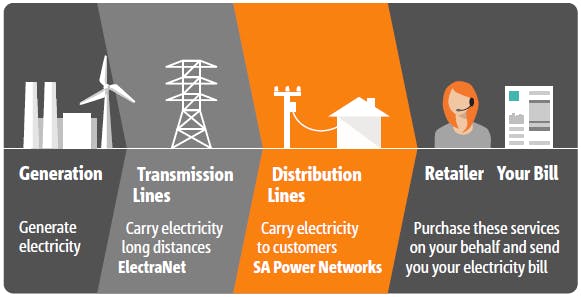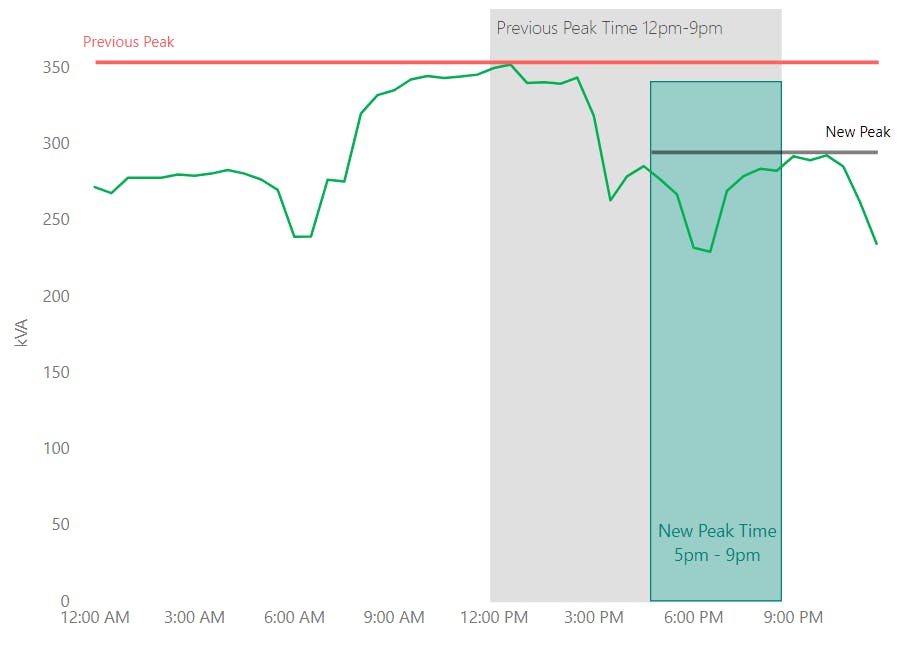Why every SA business needs to check their electricity bills and tariffs now
October 6, 2020 / Quentin Roberts

Energy bills seem to be a confusing matter for many businesses and often very little attention is given to scrutinising the rates and tariffs that appear. Because of how often I see this occurring, I wanted to give some simple tips to help businesses know what to look for. It is also pertinent to educate businesses as SA Power Networks (the organisation that provides the poles and wires across SA) have recently updated their tariff structures which could present a saving opportunity for many customers.
What makes up your electricity bill?
I'm sure SA Power Networks won't mind me using their graphic that shows how electricity gets to your door. This helps to explain some of the charges that might appear on your bill. The two main elements of the bill are;
- Energy Charges (typically around 50% of the bill)
- Network Charges (typically around 40-50% of the bill)
Energy charges are basically the cost of generating the energy that you use. Network charges are the cost of getting that electricity to your premises i.e. transmission and distribution.

The rest of your bill is made up of market, environmental and metering charges. In this article I'll focus on the network charges as these have undergone a restructure recently and it's important to check how those changes apply to your business now. We are supporting an 'understanding your bill' workshop as part of the Tonsley Future Energy Summit workshop series, so if you would like a more in-depth break down of electricity costs that session will answer your questions.
The 2020 SA Power Networks Tariff Changes that you need to check now
Each financial year SA Power Networks updates their tariff schedule. Often this is simply a rates change and not much action needs to occur. However, there are times when a significant structural change occurs in an attempt to better match tariffs to market demands and 2020 is one of those years. The high-level reason for the 2020 tariff changes are due to the impact Solar PV is having on the network. Essentially the changes are trying to reflect the fact that consumption during the times when solar is being produced should be encouraged.
For network changes, SA Power Networks essentially charges a customer based on the electrical capacity they need. In the chart below you can see the typical electrical profile of a site. As you would expect it goes up in the through the day when work is happening and then tapers off after work hours. Previously SA Power Networks would charge based on the peak that occurs between midday and 9pm, however they have shifted this window out to 5pm-9pm which reduces the peak charge in this example.

There are two main tariffs a large business can be on;
- Annual Demand (uses the highest peak across the year) [old code LV, new code LBAD-SA]
- Monthly Demand (uses the highest peak across a month) [old code BD, new code LBMD-SA]
The tariff code should be displayed in the 'Network' section of your bill, if you don't see these codes maybe send us a quick email so we can point you in the right direction. Otherwise, if you see the 'BD' code this means you're on an old (more expensive) tariff and you need to activate a change. In reviews we have done already since this tariff change, we have seen thousands of dollars saved annually, so it's definitely worth getting it right.
Anyway, I trust this has been useful for you.
